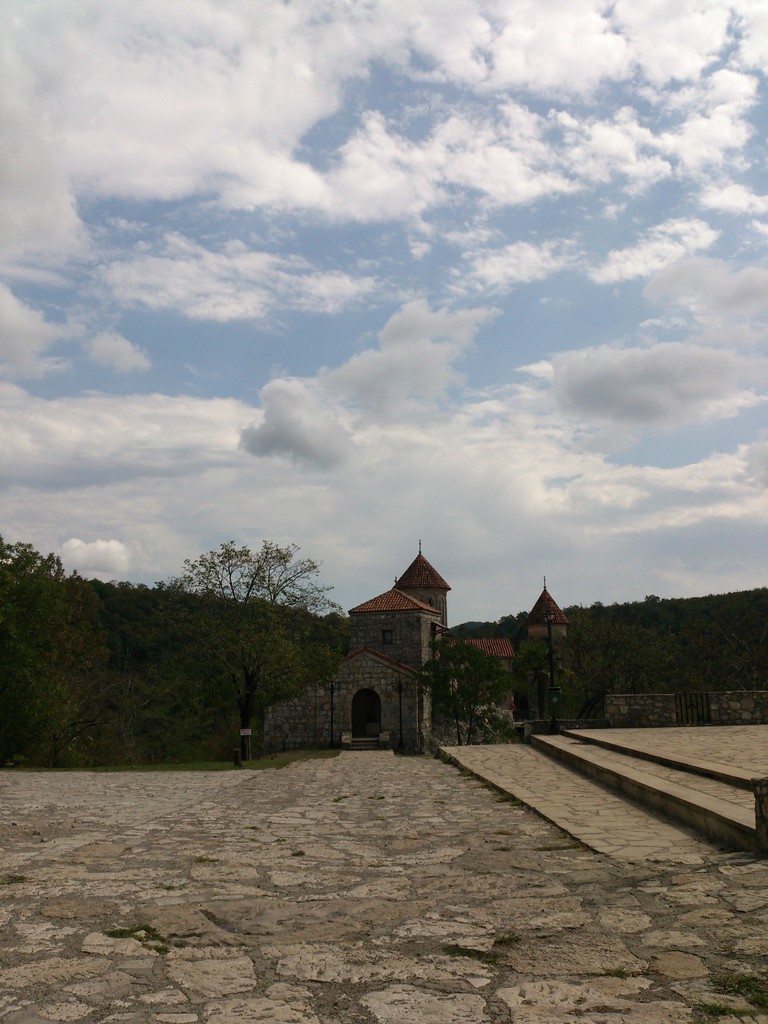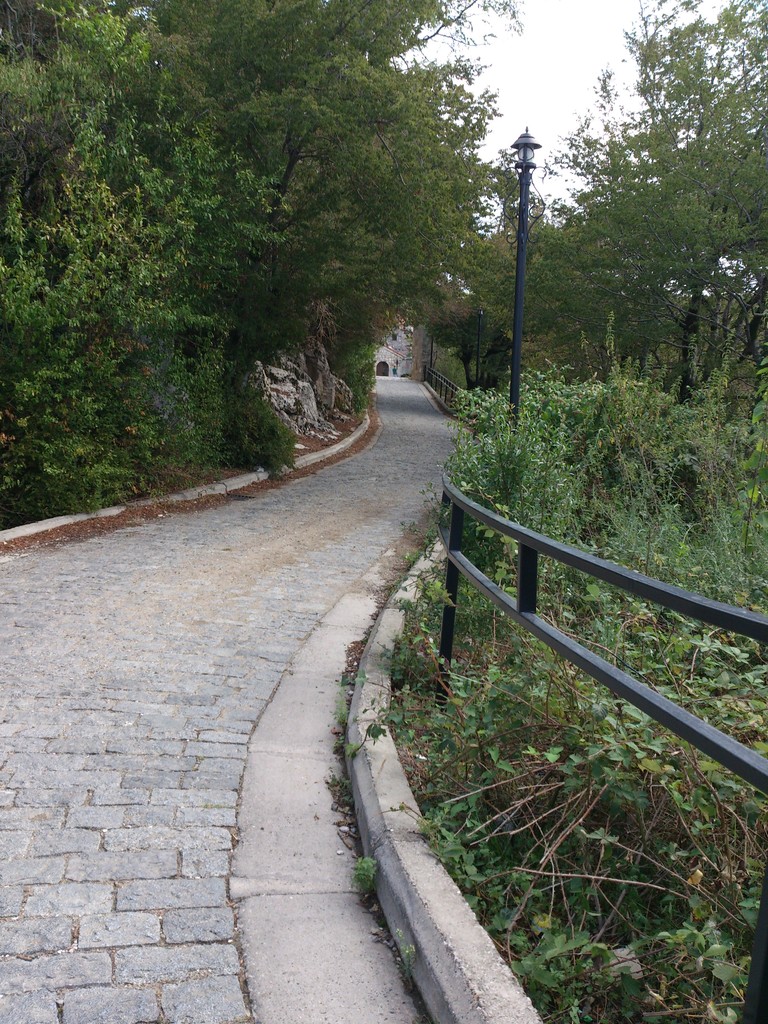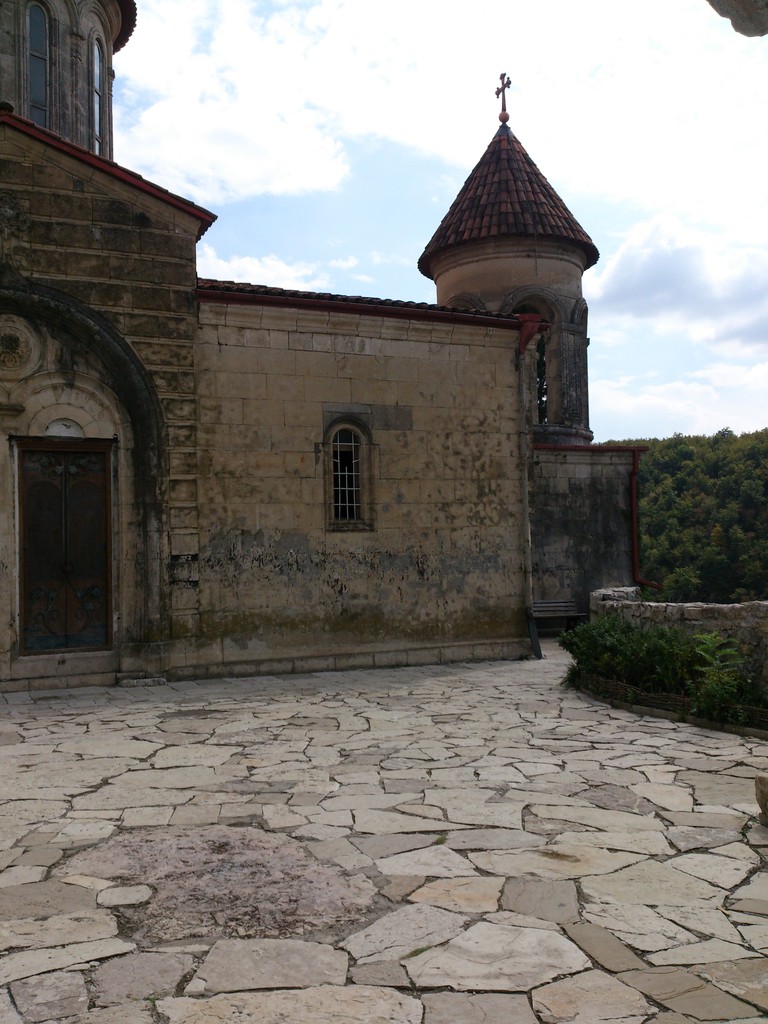Motsameta Monastery

Approximately 6 kilometres far east from Kutaisi, in a valley of the river Tskaltsitela (the Red river), you will find Motsameta Monastery in a village Motsameta. Here you can get by a car or whatever. There has been a road to there since 1958, so it's easy to visit the monastery.
Well, probably you would think, why you would want to visit a monastery, especially if you are not a Christian, or even if you are not Orthodox. I can tell you, that it's not just about the monastery or how much or if you believe in God. The scenery there and the environment and the architecture is just wonderful and this is a place you will want to visit it again, just trust me. The view from the above is just amazing. You can see the river Tskaltsitela from there and its valley and the feeling is great at that moment.

We were taught many times about the invasions of Arabs and the battles against them. There were several large invasions of Arabs and one of them was when Marwan came in Georgia in 735. Well, his name was Marwan ibn Muhammad and there is a legend, that because of his ignorance towards the people, they called him Marwan the Deaf. And Armenians called him Marwan the Blind. So, when he came to Georgia his mission was to invade Georgia and conquer its people. Well, he did go all the way from the east to the west. And there was only one fortress he could not take.

At that time there were David and Constantine Mkheidzes _ the governors of Argveti. They were good soldiers and they were Christians. Marwan sent his army from Samtskhe to Argveti. David and Constantine went against them with their army and they defeated the Marwan’s army. That was when Marwan the Deaf went mad at them and he went to Argveti himself with his whole army. The Argvetians lost the battle. David and Constantine were captured and kept in captivity. Marwan wanted them to convert into Muslim religion, but Georgians would not refuse to be Christians. So, then Marwan ordered his people to torture David and Constantine, then they were tied and thrown into the Rioni river. That night there were three columns of light on that place. Georgians were able to take David and Constantine’s bodies and took them near the Red river valley. There they found some cave besides a destroyed church and buried them there. Then there was built a monastery and it was called Motsameta Monastery. So the word “Motsameta” means that this place is of tortured ones, meaning David and Constantine.

Motsameta Monastery
The monastery is very near to Gelati Monastery, so usually when people go to Kutaisi and visit Gelati Monastery, they visit Motsameta Monastery, too. And there also is a great dining place nearby and it’s very well-known, I guess, and people just stop there to fuel up or just have a great ending of their day.
There is this tradition of Motsametoba _ this is a day to remember Davit and Constantine Mkheidzes and their bravery and courage against Marwan the Deaf in the 8-th century. The tradition takes place from the 18-th century till today and it’s usually on October 15-th. According to the legend, Motsameta was built on that very place, where Marwan the Deaf tortured the governors of Argveti. On this day many people go to Motsameta. They can go through the tunnel of the church of Motsameta, and, traditionally, after making a wish, they pay their respects to Davit and Constantine.

Architecture of Motsameta Monastery
The monastery consists of a church, a bell tower, two towers, a fence and a Tsinamdzghvari house. Davit and Constantine’s bodies are buried in Motsameta church, on the left side of the altar.
The church is a cross-domed type building. All four sides of the cross are equal. The dome rests on four pillars, two of which form the altar. The church has two doors _ west and south. The altar is on the north side, and that is pretty interesting. Maybe they built the altar there, because Davit and Constantine were buried on that place and so that the architect built the altar there. It was partitioned off by a wooden iconostasis in the 19-th century, and there are scenes from the Bible and Saints’ Lives. On the left side of the altar on a high place and on two ornamented lions, you will see a wooden thing in which there are Saints’ relics. It was made by someone Sultanovich, and there is a space left underneath that and people go through it on their knees.

There is a two-stored bell tower on the south of the church, and an inscription on it reads, that it was built by metropolitan Davit in 1845, and it is built by stones.
There are remains of two towers on the monastery territory. They were used in Shishianoba period, and that means something like scary period of time. One of the towers is on the south-east from the church and the second one is on the north-east from the church. There is a 1884 year description of the towers and it says, that there have been some narrow windows and loop-holes in the walls of the towers. There have been valuable stuff of the monastery kept in the north-east tower.
The monastery is surrounded by a stone wall. There are priests and elesiastics of the 19-20-th centuries buried in the yard of the monastery.
On the west side from the remains of the old church you will see an elongated shaped Tsinamdzghvari house.

History of Motsameta Monastery
So, I’ve told you about Marwan the Deaf and Davit and Constantine. After that went some centuries and finally it was the 11-th century when Bagrat the 3-rd rebuilt the ruined church and buried the bodies of Davit and Constantine there. I want to mention, that they were brothers and Davit was the elder one and Constantine was really young when that all happened and they were tortured.

At first, the church built by Bagrat didn’t have a dome. Then, in 1844-65 years with a guidance of Davit Tsereteli _ bishop of Imereti, Levan, Mose and Philipe Berikashvilis renovated and widened Motsameta church. That’s when the church had its dome built. They also built a stone floor and changed the iconostasis.
In the 20-th century, soon after the Soviet government settled in Georgia, the monastery was closed in 1923. In the same year, by the order of Sergo Orjonikidze, the bodies of Davit and Constantine were dug up and dragged in the streets and then, just like the first time, their bodies were thrown into the river. With the help of the local Christians, their bodies were taken from the water and brought to Kutaisi museum.
Motsameta Monastery became active in 1954, and the bodies were taken from Kutaisi museum to the monastery and buried there.
Tsinamdzghvari house was built then, in 1960.

Photo gallery
Content available in other languages
- Español: Monasterio Motsameta
- Italiano: Il Monastero Motsameta
Want to have your own Erasmus blog?
If you are experiencing living abroad, you're an avid traveller or want to promote the city where you live... create your own blog and share your adventures!
I want to create my Erasmus blog! →












Comments (1 comments)
This is a very good article and really interesting. Great job!